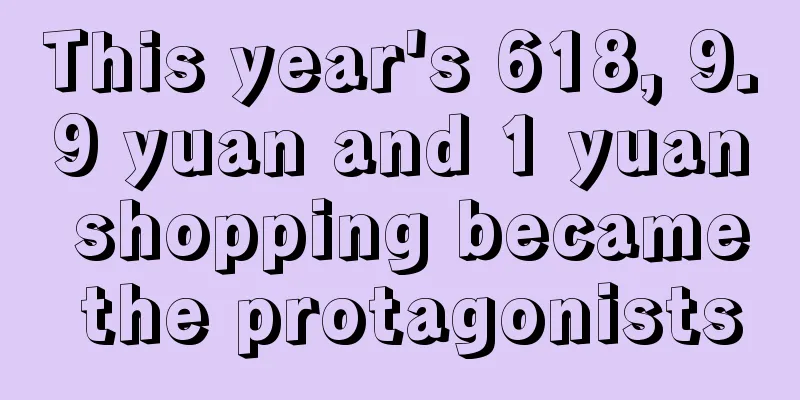More than 300 brands have joined the market, and short drama marketing is still popular

In 2025, short drama marketing will become a must for brand growth. Brands use short dramas to compete not only for traffic, but also for users' minds. Hansu launched 18 dramas in a year, breaking the circle with "saturation attack"; BOSS Zhipin uses stories to tell the brand, easily planting grass in the hearts of users... Although the skit is short, its commercial value is long. More importantly, skit marketing is not gambling, but has a complete set of scientific operating systems. Platforms are betting on the high-quality development of short dramas. iQiyi, Tencent, Kuaishou and others have invited brands to conduct in-depth customization. Short dramas are no longer just content, but also a new ecosystem for win-win cooperation between platforms and brands. 01 Short dramas become a brand standardMore and more brands are entering the battlefield of short drama marketing. According to the "2024 Micro-Short Drama Marketing Market Insight and Delivery Guide" released by Gouzheng Technology, 348 brands chose to cooperate with micro-short dramas in 2024, of which 231 brands were launching for the first time, accounting for as high as 66%. Compared with the same period last year, the number of micro-short dramas launched by brands soared by 141%, and hits appeared frequently, and short dramas with more than 1 billion views continued to break market records. The fast-moving consumer goods industry, with its keen sense of smell and short decision-making chain, has taken the lead in seizing the opportunity of short drama marketing. Data shows that brands in the fast-moving consumer goods field (beauty, food and beverage, personal care and cleaning) account for as much as 48%. Head brands such as Hansu, Pechoin, and KFC have already made in-depth layouts and firmly occupied the minds of consumers with intensive delivery strategies. The beauty brand Hansu has taken this marketing approach to the extreme. In 2024, Hansu launched 18 customized short dramas, covering a variety of scenes such as love, workplace, and family, and teamed up with many short drama top talents such as Jiang Shiqi to continuously expose its products such as "Red Waist" and "White Waist". This "saturation attack" not only helped Hansu to top the Douyin beauty list again, but also deeply engraved the brand and the concept of "anti-aging" into the user's memory. This year, the most eye-catching example of short drama marketing is "Princess Doesn't Work on Weekends" launched by BOSS Zhipin in February, which quickly set off an online craze, with the total number of readings of the topic exceeding 600 million. If Hansu's strategy is to "cast a wide net and catch more fish", then BOSS Zhipin has chosen a path of refined operations. The short play combines workplace hot topics such as "PUA" and "workplace counterattack" with comedy elements, accurately hitting the pain points and pleasure points of young professionals. The slogan "I need to talk to the boss when looking for a job" has been fully upgraded to "When you are a boss, you must be a good boss who seeks benefits for employees", which has refreshed the brand image in one fell swoop. Fang Fang, founder of the short drama production company "Sheshi Culture", publicly stated that short dramas are naturally suitable for fast and high-frequency information placement. "Compared to spending a lot of money on variety shows or long dramas, short dramas are definitely less expensive for brands, and the more episodes they have, the richer the information they convey." But she also pointed out that brands’ requirements for short drama marketing are becoming more and more complex, and some even hope to directly combine short dramas with live streaming sales. This “both” marketing demand may also make it difficult to focus on content production, resulting in a “jack of all trades and master of none”. However, for brands, short drama marketing must be deployed even if there are risks. Because short dramas are not only a traffic entrance, but also a key path for brands to achieve "integration of brand and effect". Of course, from the initial simple paid placement in short dramas, to teaming up with top influencers to conduct in-depth KOL promotion, and then to comprehensive independent customization, the logic of short drama marketing is rapidly evolving into a serious compulsory course for brands. 02 Is skit marketing a science?The rise of short play marketing is not only because it is short enough, but also because it is accurate enough. When brands entered the short play market, they simply implanted products and purchased title sponsorships. But when short plays gradually occupied the fragmented time of young people, brands finally discovered the true value of short play marketing - short plays can touch the hearts of users more deeply and naturally. Dentsu Group once pointed out in the "Short Play Scientific Marketing Quick Guide" that the essence of short play marketing is just one sentence: "Make the audience feel good, fun, and easy to buy." In the past year, brands have explored short play marketing, with both success and failure, but all experiences point to a core conclusion: short play marketing is science, not gambling. Where is the science? If brands only want to "show themselves" through skits without considering whether the audience is willing to pay, then all efforts will become ineffective marketing. Too much content and too little story are the biggest taboos in short drama marketing. To address this problem, Dentsu Group has come up with the "SHORT Five-Step Method": Sense, Hit, Optimize, Remix, and Technique. This formula may seem complicated, but in reality, brands only need to grasp three points: accurate market insights, accurate content matching, and accurate distribution channels. Only when these three points are in place at the same time can the brand's investment be truly certain. The more mature the short drama market is, the more refined the marketing methodology is needed. Meituan has been exploring short drama marketing over the past year, such as "I Changed My Fate in My Diary", which not only satisfied young people's "sense of pleasure", but also accurately conveyed the "expansion value" of Meituan's magic coupons. In the drama, Meituan's magic coupons became a key prop to promote the development of the plot. The audience not only did not dislike it, but instead had a better impression of the Meituan brand. In particular, the participation of actor Wang Tianfang, with his personal charm as a stand-in for Huang Bo, brought a natural communication effect to the short drama. Within less than a week of its release, the number of viewers exceeded one million. Meituan thus found the secret of "cool drama marketing": brand placement should serve the plot, not the plot serving the brand. When brands enter the short drama industry, they are entering into a deep relationship with users rather than simply buying advertising space. As Buffett said, "What customers really buy is not your product, but the way you solve their problems." Short drama marketing is the best way for brands to communicate with users in the new era. It not only makes the brand "seen", but also makes the brand "remembered" and "trusted." Because what ultimately determines marketing effectiveness is not the length of the content, but the distance between the content and people. 03 Platform betting, focusing on quality productsThere has never been a shortage of opportunities in the short drama field; what is really lacking is the vision to plan for the future. When major long video platforms took the initiative to participate, short dramas quickly entered the era of high-quality production. In particular, the rise of brand-customized short dramas has allowed platforms to discover greater imagination space beyond content. Long video giants such as iQiyi, Youku, and Tencent have begun to comprehensively lay out the high-quality track of short dramas. They are not simply focusing on user traffic, but hope to regain the initiative in commercialization through high-quality brand-customized short dramas. Content determines how long users stay, and the brand determines how much user value the content brings. Brand-customized short plays are completely different from traditional free short plays or paid-for-revenue short plays. Its logic is no longer a simple advertising placement or pay-to-watch, but directly creates a new ecosystem of "content as advertising". This model makes the relationship between brands and platforms no longer a simple "Party A and Party B" relationship, but forms a symbiotic and win-win ecological chain. Long video platforms are all planning this new commercial ecosystem, because brand-customized short dramas can bring real long-term and stable income to the platform, while also greatly improving the overall content quality of the platform. More importantly, through brand-customized short dramas, the platform can better control the user experience and maximize the commercialization of content. Tencent Video's strategy is even clearer: a three-pronged approach of high-quality, celebrity-oriented, and brand-oriented. On January 13 this year, Ma Huateng set the tone at the Tencent Group's annual meeting: Tencent Video will "focus on investing in high-quality short dramas rather than low-quality short drama content." The logic behind this model is actually simple: viewers don’t want to watch ads, they want to watch content they like. Brands are no longer forcibly implanted foreign objects, but companions for viewers on their journey to watch TV series. Tencent then launched a high-quality brand short drama "The Ancient Yue Is No Longer Seen Today", starring CCTV's popular host Wang Bingbing. This drama not only broke the record of Tencent's short drama market, but also led a large number of brands to actively cooperate with Tencent to explore subsequent brand customization models. The platform is betting on high-quality short dramas not to follow the trend, but to update its business model. The logic is very clear: when the star effect and brand effect are combined, short dramas can naturally bring high-quality traffic, and ultimately achieve a win-win situation for brands, users, and platforms. Taking this drama as a benchmark, the platform can quickly establish a cooperation system for brand-customized short dramas and form a complete closed-loop business ecosystem: brands invest in short dramas and deeply participate in content creation, the platform provides high-quality production teams and celebrity resources, and assists brands in marketing. Users naturally accept brand information while watching the drama. The platform, which focuses on high-quality short dramas, can ultimately allow brands to see not only traffic, but also long-term value. This higher-level cooperation model also allows the platform to truly get out of the "traffic dilemma" and enter an era of stable business ecology. Brand-customized short dramas may seem like platforms catering to brand needs, but behind the scenes they are actually reshaping their own content business models. The boundaries between long and short videos are becoming blurred, and the competition between platforms is no longer a simple fight for users, but a fight for the entire brand marketing ecosystem. 04 ConclusionAt the beginning of 2025, short drama marketing officially entered a national craze, but real hits are still scarce. The industry's generally homogenized plots and stereotyped character routines have always troubled brand short plays. The key to breaking through, as shown by more and more successful cases, is that brands must closely focus on their core values, tell good stories, implant emotions, and let the products truly go from background props to the hearts of the audience. Brands have gone from tentative attempts to refined operations and finally to self-customized in-depth strategies. Behind this is the process of the mental game between brands and audiences: from "being seen" to "being remembered" and then to "being trusted", short drama marketing is no longer just an elective course for brands, but a compulsory course for all brands today. The participation of more than 300 brands also reflects the essence of marketing in this era: every technological iteration and platform change ultimately grabs the minds of consumers. Today, the dialogue between brands and audiences is moving from "seeing" to "believing". What brands tell through skits is not just a story, but a brand spirit and lifestyle that consumers can identify with. |
<<: The creativity of amateurs is limited. How to avoid homogeneity when expanding the market?
>>: Whoever uses it will become popular, Douyin's 10 golden 3-second hit methods
Recommend
Xiaohongshu group chat + live broadcast, the second battlefield in the private domain, doubled revenue
The mode of Xiaohongshu group chat + live broadcas...
How to start a cross-border e-commerce business? How much does it cost?
With the acceleration of globalization and the pop...
WeChat stores, the end is a crash
The launch of WeChat Stores is seen as the rekindl...
Dunhuang.com New Seller Protection Period Exemption Policy
In order to guide new sellers to understand the tr...
Which one is better, Dianxiaomi or SellerSprite? Does Dianxiaomi require any fees?
Dianxiaomi and SellerSprite are two popular e-comm...
Young people gather on Xiaohongshu
In the world of social media, traffic is often kin...
Is Lazada cross-border e-commerce real? Is it reliable?
There are many cross-border e-commerce platforms t...
What model does Shopify belong to? How many models are there?
There are many e-commerce platforms now. Shopify i...
The era of short drama 2.0: gold rush, big changes, new trends
In 2024, short short dramas ushered in the booming...
Isn't Shopee username the same as store name? What's the difference?
There are many cross-border e-commerce platforms n...
No matter how hard I work to make money, why can’t I live a good life?
Exploring how to find happiness amid economic fluc...
Douyin business interview track is not a good business
In the wave of short video development, every play...
When going out during the May Day holiday, should you trust Dianping or Xiaohongshu?
Is it difficult to choose food and scenery during ...
40 million fans IP, collapsed in the spring of 2024
Recently @Thurman猫一杯 was administratively punished...
How to join Amazon's 0 Plan? What are the requirements for the 0 Plan?
Amazon attaches great importance to brand rights, ...









